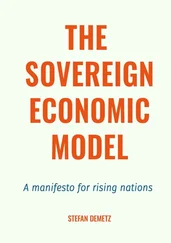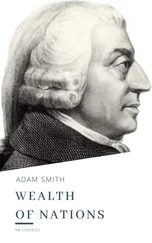No less important, the contingent path of history worked in Botswana’s favor. It was particularly lucky because Seretse Khama and Quett Masire were not Siaka Stevens and Robert Mugabe. The former worked hard and honestly to build inclusive institutions on the foundations of the Tswanas’ tribal institutions. All this made it more likely that Botswana would succeed in taking a path toward inclusive institutions, whereas much of the rest of sub-Saharan Africa did not even try, or failed outright.
THE END OF THE SOUTHERN EXTRACTION
It was December 1, 1955. The city of Montgomery, Alabama, arrest warrant lists the time that the offense occurred as 6:06 p.m. James Blake, a bus driver, was having trouble, he called the police, and Officers Day and Mixon arrived on the scene. They noted in their report:
We received a call upon arrival the bus operator said he had a colored female sitting in the white section of the bus, and would not move back. We … also saw her. The bus operator signed a warrant for her. Rosa Parks (cf) was charged with chapter 6 section 11 of the Montgomery City Code.
Rosa Parks’s offense was to sit in a section of the Cleveland Avenue bus reserved for whites, a crime under Alabama’s Jim Crow laws. Parks was fined ten dollars in addition to court fees of four dollars. Rosa Parks wasn’t just anybody. She was already the secretary of the Montgomery chapter of the National Association for the Advancement of Colored People, the NAACP, which had long been struggling to change the institutions of the U.S. South. Her arrest triggered a mass movement, the Montgomery Bus Boycott, masterminded by Martin Luther King, Jr. By December 3, King and other black leaders had organized a coordinated bus boycott, convincing all black people that they should not ride on any bus in Montgomery. The boycott was successful and it lasted until December 20, 1956. It set in motion a process that culminated in the U.S. Supreme Court ruling that the laws that segregated buses in Alabama and Montgomery were unconstitutional.
The Montgomery Bus Boycott was a key moment in the civil rights movement in the U.S. South. This movement was part of a series of events and changes that finally broke the mold in the South and led to a fundamental change of institutions. As we saw in chapter 12, after the Civil War, southern landowning elites had managed to re-create the extractive economic and political institutions that had dominated the South before the Civil War. Though the details of these institutions changed—for example, slavery was no longer possible—the negative impact on economic incentives and prosperity in the South was the same. The South was notably poorer than the rest of the United States.
Starting in the 1950s, southern institutions would begin to move the region onto a much faster growth trajectory. The type of extractive institutions ultimately eliminated in the U.S. South were different from the colonial institutions of pre-independence Botswana. The type of critical juncture that started the process of their downfall was also different but shared several commonalities. Starting in the 1940s, those who bore the brunt of the discrimination and the extractive institutions in the South, people such as Rosa Parks, started to become much better organized in their fight against them. At the same time, the U.S. Supreme Court and the federal government finally began to intervene systematically to reform the extractive institutions in the South. Thus a main factor creating a critical juncture for change in the South was the empowerment of black Americans there and the end of the unchallenged domination of the southern elites.
The southern political institutions, both before the Civil War and after, had a clear economic logic, not too different from the South African Apartheid regime: to secure cheap labor for the plantations. But by the 1950s, this logic became less compelling. For one, significant mass outmigration of blacks from the South was already under way, a legacy of both the Great Depression and the Second World War. In the 1940s and ’50s, this reached an average of a hundred thousand people per year. Meanwhile, technological innovation in agriculture, though adopted only slowly, was reducing the dependence of the plantation owners on cheap labor. Most labor in the plantations was used for picking cotton. In 1950 almost all southern cotton was still picked by hand. But the mechanization of cotton picking was reducing the demand for this type of work. By 1960, in the key states of Alabama, Louisiana, and Mississippi, almost half of production had become mechanized. Just as blacks became harder to trap in the South, they also became no longer indispensable for the plantation owners. There was thus less reason for elites to fight vigorously to maintain the old extractive economic institutions. This did not mean that they would accept the changes in institutions willingly, however. Instead, a protracted conflict ensued. An unusual coalition, between southern blacks and the inclusive federal institutions of the United States, created a powerful force away from southern extraction and toward equal political and civil rights for southern blacks, which would finally remove the significant barriers to economic growth in the U.S. South.
The most important impetus for change came from the civil rights movement. It was the empowerment of blacks in the South that led the way, as in Montgomery, by challenging extractive institutions around them, by demanding their rights, and by protesting and mobilizing in order to obtain them. But they weren’t alone in this, because the U.S. South was not a separate country and the southern elites did not have free rein as did Guatemalan elites, for example. As part of the United States of America, the South was subject to the U.S. Constitution and federal legislation. The cause for fundamental reform in the South would finally receive support from the U.S. executive, legislature, and Supreme Court partly because the civil rights movement was able to have its voice heard outside the South, thereby mobilizing the federal government.
Federal intervention to change the institutions in the South started with the decision of the Supreme Court in 1944 that primary elections where only white people could stand were unconstitutional. As we have seen, blacks had been politically disenfranchised in the 1890s with the use of poll taxes and literacy tests (this page–this page). These tests were routinely manipulated to discriminate against black people, while still allowing poor and illiterate whites to vote. In a famous example from the early 1960s, in Louisiana a white applicant was judged literate after giving the answer “FRDUM FOOF SPETGH” to a question about the state constitution. The Supreme Court decision in 1944 was the opening salvo in the longer battle to open up the political system to blacks, and the Court understood the importance of loosening white control of political parties.
That decision was followed by Brown v. Board of Education in 1954, in which the Supreme Court ruled that state-mandated segregation of schools and other public sites was unconstitutional. In 1962 the Court knocked away another pillar of the political dominance of white elites: legislative malapportionment. When a legislature is malapportioned—as were the “rotten boroughs” in England before the First Reform Act—some areas or regions receive much greater representation than they should based on their share of the relevant population. Malapportionment in the South meant that the rural areas, the heartland of the southern planter elite, were heavily overrepresented relative to urban areas. The Supreme Court put an end to this in 1962 with its decision in the Baker v. Carr case, which introduced the “one-person, one-vote” standard.
But all the rulings from the Supreme Court would have amounted to little if they hadn’t been implemented. In the 1890s, in fact, federal legislation enfranchising southern blacks was not implemented, because local law enforcement was under the control of the southern elite and the Democratic Party, and the federal government was happy to go along with this state of affairs. But as blacks started rising up against the southern elite, this bastion of support for Jim Crow crumbled, and the Democratic Party, led by its non-southern elements, turned against racial segregation. The renegade southern Democrats regrouped under the banner of the States’ Rights Democratic Party and competed in the 1948 presidential election. Their candidate, Strom Thurmond, carried four states and gained thirty-nine votes in the Electoral College. But this was a far cry from the power of the unified Democratic Party in national politics and the capture of that party by the southern elites. Strom Thurmond’s campaign was centered on his challenge to the ability of the federal government to intervene in the institutions of the South. He stated his position forcefully: “I wanna tell you, ladies and gentlemen, that there’s not enough troops in the army to force the Southern people to break down segregation and admit the nigra race into our theaters, into our swimming pools, into our homes, and into our churches.”
Читать дальше












